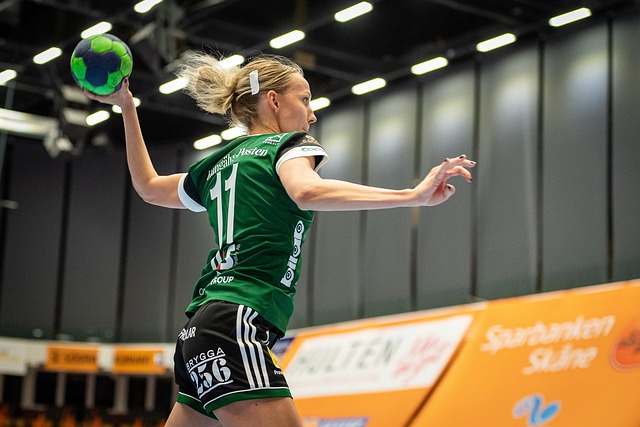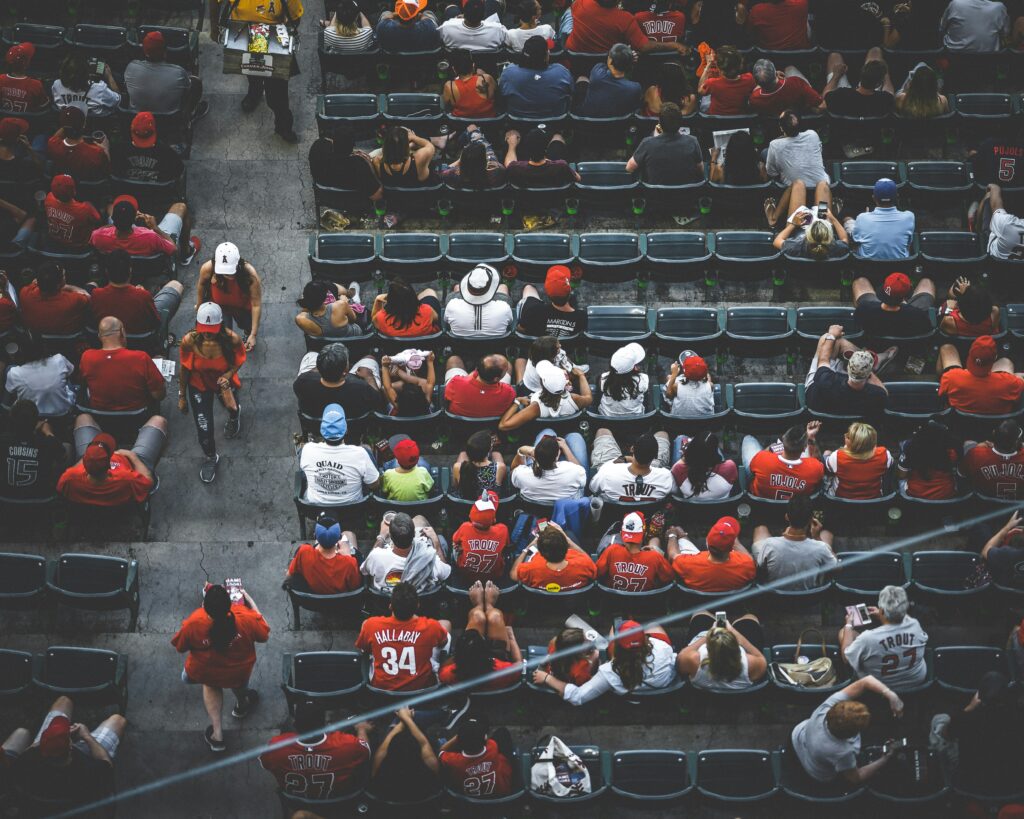The Landscape Today
Women in sports are experiencing a transformative moment in 2024. Years of advocacy, persistence, and awareness have created a cultural shift that is finally showing tangible results—on the field and beyond.
A Snapshot of Progress
While challenges remain, the momentum behind women’s sports is undeniable. Recent developments reflect more than fleeting headlines—they signal structural change.
- Increased global participation: More nations are supporting female athletes at the grassroots and Olympic levels.
- Expanded access: More women now have access to elite training, coaching, and professional pathways.
- Recognition in traditionally male-dominated sports: Women are competing, coaching, and leading in areas long closed to them.
Surge in Visibility and Sponsorship
What was once niche is now mainstream. Women’s sports are drawing larger crowds and greater commercial interest than ever before.
- Media coverage is up: Broadcasters are investing in more consistent and high-quality coverage of women’s events.
- Major sponsorship deals: Brands are recognizing the influence and marketability of women athletes and teams.
- Record-breaking attendances: From soccer to basketball, women’s leagues are setting new attendance benchmarks.
Why 2024 Feels Different
Unlike previous peaks in coverage or awareness, today’s momentum is driven by sustained investment and cultural validation. Several key factors set this current phase apart:
- Athlete-driven media and advocacy: Women athletes are not only performing—they’re leading conversations around equity and visibility.
- Institutional backing: More leagues and governing bodies are embedding women’s sports into long-term strategic plans.
- Cultural readiness: Audiences are no longer just receptive—they’re expectant. The demand for women’s sports is real and growing.
This isn’t just another moment for women in sports—it’s the beginning of a new era.
Key Barriers Women Have Faced
Despite some major wins in recent years, barriers for women in sports remain deeply rooted—visible and structural.
Start with media coverage. Women’s sports still receive a fraction of broadcast time and headlines compared to their male counterparts. That lack of visibility trickles into sponsorships and funding. Brands chase exposure, and when women aren’t on the screen, they’re not in the budgets either. It’s a loop that punishes excellence with silence.
Gender stereotypes also linger, especially in sports traditionally seen as male territory—think football, hockey, or motorsports. Even when women break in, they’re too often treated as novelties instead of serious contenders. The burden to prove legitimacy never really goes away.
Institutionally, many federations and governing bodies weren’t built with women in mind. That shows up through disparities in facilities, scheduling, pay, and leadership roles. Culture plays a role too—some regions still treat women’s participation in sports as secondary or simply inappropriate.
Then there’s the pipeline problem. Girls are dropping out of sports at higher rates than boys, often due to a lack of opportunities, role models, or community support. Without early investment in youth participation, the future elite level dries up before it begins.
Solving these issues won’t happen overnight. But naming them plainly is the first step toward knocking them down.
Recent Milestones Worth Noting
2024 hasn’t just been another incremental step forward—it’s been about breaking ceilings. Female athletes are rewriting the record books on the global stage. Olympic qualifiers saw women crush previous benchmarks in track, swimming, and gymnastics, while behind the scenes, headlines rolled in for firsts in coaching and executive leadership. A woman now heads operations for a major European football club. Another was named the first female pitching coach in minor league baseball. These aren’t outliers anymore—they’re signals.
On the money front, the numbers are better, but the gap’s still there. The WNBA secured a major broadcast deal that included increased revenue sharing for players. USWNT players now earn equal pay to their male counterparts thanks to a hard-fought battle, but look outside the U.S. or beyond top-tier contracts, and parity fades fast. In tennis and mixed martial arts, prize purses are finally showing signs of balance—proof that when leagues invest, viewership and revenue follow.
Meanwhile, mainstream appeal for women’s leagues is becoming the norm, not the exception. The WSL in England has packed stadiums. NWSL games in the U.S. are breaking attendance records and grabbing national coverage. Brands are inking longer, more lucrative sponsorship deals. And fans? They’re no longer just showing up. They’re showing loyalty.
Progress is uneven, but it’s moving. Faster than before. And this time, the wins are sticking.
Voices Leading the Charge
The old model of leadership in sports is quietly cracking—and women are behind it. Take athletes like Megan Rapinoe, Naomi Osaka, or Simone Biles. They’re not just competing; they’re setting agendas. They’ve brought mental health, racial equity, and gender pay gaps to the global stage without waiting for permission or media filters. This is leadership on their own terms: unapologetic, steady, and deeply personal.
Then there are the advocates—former players turned activists, journalists, and social entrepreneurs—who are using their platforms to demand more than hashtags. Whether it’s pushing for equitable media coverage, building grassroots programs, or calling out double standards in real time, these voices aren’t just loud—they’re persistent and strategic.
And while big names score headlines, a lot of change is happening out of sight. Coaches shaping inclusive team cultures. Organizers making tournaments accessible. Data analysts and comms pros crafting narratives that resonate beyond the scoreboard. These people rarely trend, but they’re reshaping what sustainable, inclusive sport looks like every season. True progress isn’t just about visibility at the top—it’s built from the ground up, by people who keep showing up and doing the work.
Beyond the Major Leagues
Not every story needs stadium lights. Some of the most exciting shifts in women’s sports are happening off the mainstream radar—in climbing gyms, skateparks, and digital arenas around the world. Women are moving into alternative and emerging sports fast, and they’re not waiting for permission.
Climbing, once a niche pursuit, has gained serious attention thanks to Olympic inclusion and community-centered films. Women are now leading routes and gathering massive followings, both on the wall and online. In skateboarding, street competitions and open-format events have welcomed a wave of female athletes smashing old stereotypes. The vibe is raw, real, and deeply personal—exactly what younger audiences are into.
Then there’s esports. Still climbing out of its boys’ club image, the space is opening doors for talented female gamers, casters, and creators. Visibility grows each time a woman takes the stage at a major tournament—or launches her own stream, amassing loyal fans on Twitch, YouTube, and beyond.
Much of this rise is thanks to digital-first platforms leveling the playing field. No need for a broadcast deal when you can build your own world on TikTok or Instagram. These platforms allow underrepresented athletes to shape their narrative and find fans directly.
Alternative doesn’t mean small anymore. It means unfiltered, untraditional, and unstoppably forward-moving.
(For more: Exploring Alternative Sports: What’s Beyond the Mainstream)
What’s Still in the Way
Despite growing momentum, women in sports still face significant structural and cultural challenges. Progress has accelerated, but systemic barriers continue to limit visibility, investment, and equity.
Media Bias and Inconsistent Coverage
While major moments in women’s sports get brief surges of media attention, consistent and comprehensive coverage remains rare.
- Men’s sports still dominate prime-time slots and major media contracts
- Stories featuring women athletes are underreported or framed through outdated stereotypes
- Coverage often focuses on appearance over performance, undermining athletic credibility
Why it matters: Visibility drives investment, sponsorships, and fan engagement. Without regular exposure, even elite women athletes remain undervalued and under-recognized.
The Fragile Economics of Women’s Leagues
Many women’s professional leagues operate on slim margins, often without the financial safety nets their male counterparts receive.
- Lower sponsorship deals and limited broadcast rights revenue
- Dependence on crowdfunding or short-term grants to stay afloat
- Inconsistent pay scales and lack of job security for athletes
Implication: Without robust economic support, long-term planning—both for the leagues and for the athletes—is severely hindered.
The Fight for Equal Investment and Infrastructure
Resources remain unevenly distributed across sports institutions. Even at elite levels, female athletes often train in subpar environments compared to male athletes in similar positions.
- Unequal access to high-quality training facilities, equipment, and medical staff
- Sponsorship deals favor male athletes, even in shared-brand partnerships
- Support staff, marketing teams, and logistical resources continue to lag
Bottom line: Achieving true equity in sports requires more than recognition. It demands equal commitment, from locker room conditions to prime-time slots.
As attention grows, so does the responsibility to ensure that women in sports aren’t only seen—but structurally and financially supported.
Looking Ahead
The next frontier for women in sports blends tech, media, and ownership. We’re already seeing early waves: startups building performance gear tailored for female athletes, data analytics that address gaps in training protocols, and new platforms centering women’s games and voices. Then there’s NIL (Name, Image, and Likeness)—a game-changer that lets athletes monetize their brand early. More women are not just leveraging it, but leading with it—turning scholarship years into business blueprints.
Media is a key battleground. More athletes are launching podcasts, docuseries, and creator-driven channels. It’s content by athletes, for fans—direct, unfiltered, and smart. Athlete-led media won’t erase traditional coverage, but it adds pressure. Institutions can’t ignore performance when the players are pulling in millions of views on their own.
Here’s the big ask: fans, brands, and leagues need to move beyond hype and into habit. Show up. Buy in. Not just for finals or viral moments, but week after week. Real change needs a long-term mindset—steady investment, equal airtime, continued access at the youth level. Visibility cracked the door open. Now infrastructure has to build the house.




